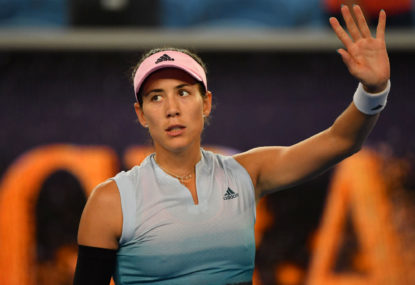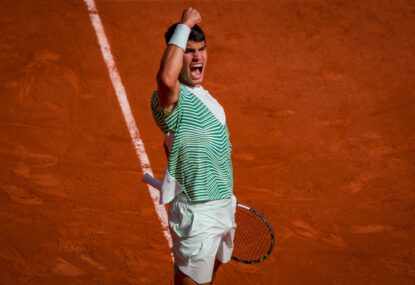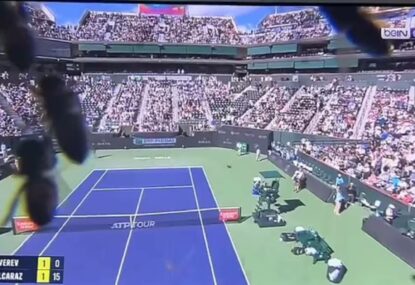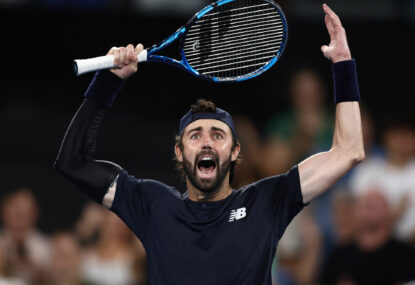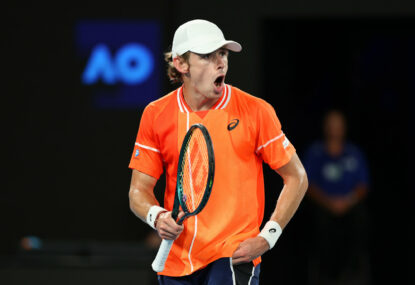Roger Federer will not win this year’s US Open as age, it seems, is finally catching up with him.
For anyone else in the sporting world, this hypothesis would be axiomatic.
Even though athletes tend to have longer careers these days, due to advancements in sports medicine, training and nutrition, Father Time can only be kept at bay for so long.
That time is now upon the 20-time slam winner. This does not mean he cannot continue to be successful, far from it, but he may struggle to win the biggest tournaments going forward.
For the now-37-year-old Federer to win his first slam at Flushing Meadows since 2008, everything needs to fall into place.
Firstly, he needs an easy draw.
If the second seed overcomes unseeded John Millman, he could have to go through Novak Djokovic, Marin Cilic and Rafael Nadal to claim the title.
As far as draws go, those final three matches are as tough as it gets.
Second, the court needs to be fast. A fast surface allows Federer to hit through the court easier, it rewards his attacking style and it neuters, to an extent, the effect of the supreme defenders.
This was the case when Federer won the 2017-18 Australian Opens on the sped up Plexicushion courts, which played more like the old Rebound Ace surface that was replaced in 2007.

(Georgios Kefalas/Keystone via AP)
So how slow is the Arthur Ashe court?
“I feel it plays very slow, to be honest,” said Federer after beating Yoshihito Nishioka in Round 1.
He added: “I remember when I was here before Cincinnati, I came to practice here in New York, and I also combined it with the balls we played at Cincinnati, but the bounce was incredible. I feel like it’s a very bouncy court. Obviously at night time it goes slower.
“Most of the big matches will be played at night here, especially down the stretch. So I feel like you can really construct the point nicely. If you play attacking tennis, you have to do it smartly. Like in Cincinnati, you can’t outright play aggressive tennis and try to suffocate your opponent.
“This, to me, seems the slowest US Open we’ve seen in years.”
The five-time champion in New York did add that a slower court usually helps the top guys, but when the likes of Djokovic and Nadal lurk in the draw, it is more likely to benefit them over Federer.
Third and finally, Federer is simply not playing as well as he was in 2017.
He can still produce moments and even matches of brilliance, as he did against Nick Kyrgios in Round 3, but there is a vulnerability now that will not dissipate.
The difference between his miraculous 2017 season, where he won two slams, seven titles and won 91.23 per cent of his matches, and this season, where he has won one slam, three titles and 87.8 per cent of his matches, seems infinitesimal.
In fact, the world number two recorded his best ever start to a calendar year after chalking up 17 straight wins between January and March.
However, there is a marked difference if you study his matches this season.
Whilst Federer’s serve, on the whole, is as deadly as ever, notching up the fourth best serving figures on the tour behind serving skyscrapers John Isner, Ivo Karlovic and Milos Raonic, his return of serve is not as majestic.
According to ATP stats leaderboards, Federer is down at 21st when looking at return points won, return games won and break points converted. In 2017 he was 12th in this department.
He is also slightly down on converting and saving break points, winning tiebreaks and deciding sets in 2018.

( The Yomiuri Shimbun via AP Images )
Most importantly, however, he does not have the assuredness from the back of the court that he had in spades last year.
If you can draw him into the longer rallies, Federer is tending to overhit and mistime routine shots, as he did against Djokovic in the Cincinnati Masters final. And the other-worldly backhand he wielded last year is not nearly as potent in 2018.
The Serb played well but Federer hit twice as many unforced errors as winners on that day and although he got to the final, he was not playing particularly well all week.
This has been the case for large parts of 2018. Where last year he was playing spectacular tennis throughout, this year there are more workmanlike performances.
Yes, he won his sixth Australian Open title in January but that was on a fast court and there was no Nadal or Djokovic to come up against.
If Djokovic can get as many balls back as he did in the fastest Masters tournament on the ATP circuit, it does not bode well for Federer if they were to meet on the slower DecoTurf ones, filled with asphalt, paint and sand, in the Big Apple.
He will need to pull another Houdini to pull this one off.
Federer can still win another slam, but he may have a greater shot at it Down Under or at the hallowed turf of Wimbledon.































































































